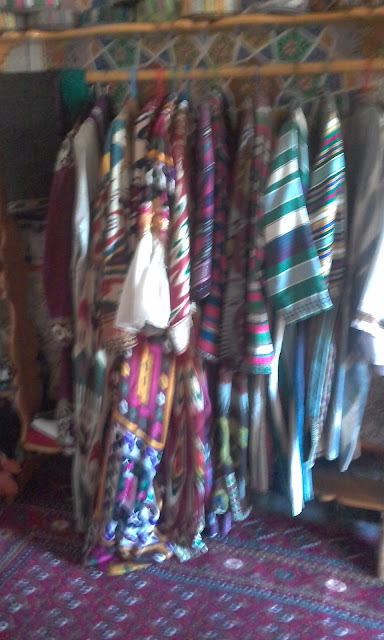8-DAY FAYZULLA KHODJAEV HOUSE
TODAY IS THE 8- DAY OUR PRACTICE LESSON. TODAY WE VISITED ONE OF THE RICH BUKHARA FAYZULLA KHODJAEV`S HOUSE-MUSEUM
Who was Fayzulla Khodjaev?
Fayzulla Khodjaev Museum was one of the most striking personalities in the political arena of Bukhara in the beginning of the 20th century. One of leaders of Young Bukharians- Jadids, a political figure, a patron of art, a fighter for equal rights and democracy, he was in 1938.
Fayzulla Khodjaev was born in the family of a wealthy trader Ubaydullokhoja. His father tried to give him the secular education, so Fayzulla Khodjaev studied in Russia for a long time. Upon his return home to Bukhara in 1913, he joined Bukharan Jadids. In 1916 -1920 he was one of the leaders of Young Bukharan Party (Jadids) that stroke against dehumanish activity of the Emir of Bukhara. Fayzulla Khodjaev and his close friend and brother-in-arms writer A.Fitrat organized a demonstration calling for the adoption of the constitution and reforms aimed at improving the life of people in Bukhara Emirate. The demonstration was broken up, Young Bukharans had to flee. When the Central Asia entered USSR, Fayzulla Khodjaev participated in the regional administration but was executed in 1937-1938 in the course of massive repressions.
People in Bukhara still honour the memory of Fayzulla Khodjaev. The fact that his family house became the Museum named after Fayzulla Khodjaev is another evidence of it. The house is located in famous Bukharan neighborhood Goziyon. The representatives of court nobility, rich merchants and traders lived here indigenously. Ubaydullokhoja, the father of Fayzulla Khojaev, built a number of houses in this block at the end of 1980s. He involved the most famous Bukharian architects who turned the house into a model of residential architecture in Bukhara.
Fayzulla Khojaev Museum is distinguished with luxurious and refined interior of rooms. All rooms are skillfully decorated with wood carving and ganch. The whole tableware that once belonged to Khojaev’s family remained until nowadays.
Just like all rich houses of Bukhara, Fayzulla Khojaev house has havli darun, i.e. an internal bailey, and havli berun, outside yard. In Muslim states, havli darun was a typical female part of the house, while havli berun was a male area. The house also had stables, gardens and household premises.
To be noted, the house has a network of underground tunnels, their designation is still unknown. Perhaps, they were built by Ubaydullokhoja to hide from khan’s displeasure in case of danger, or perhaps, they have much more ancient story behind them and existed long before the house was built.
Today, Fayzulla Khodjaev’s Museum is open for visiting. It has a number of tableware sets, eastern furniture and other attributes of life of Bukharans in the 19th century. Also the museum visitors can learn Fayzulla Khodjaev’s biography and his activity until his death in 1938.























Good job 👏
ОтветитьУдалитьDid you know any information about his generation? Are they still alive
ОтветитьУдалитьEnjoyed reading the article above
ОтветитьУдалитьPerfect pictures 😍
ОтветитьУдалитьPerfect
ОтветитьУдалитьNew information 😉 thank you your blog is very useful ☺️ for me
ОтветитьУдалитьColorful and your blog is very useful 👍
ОтветитьУдалить